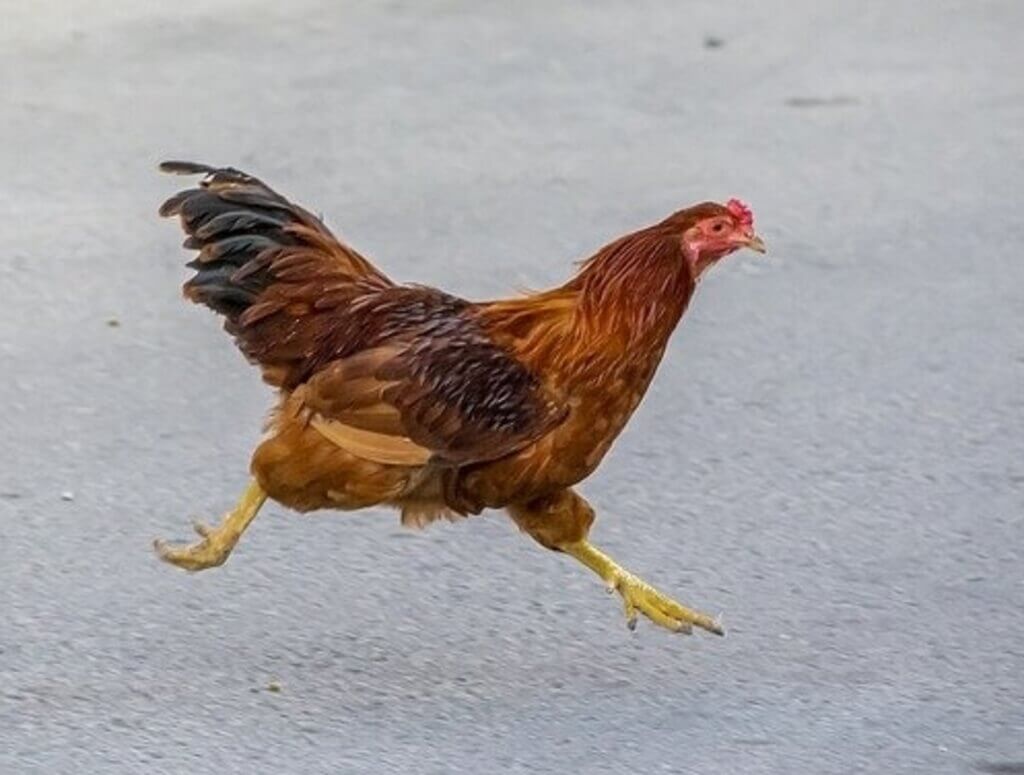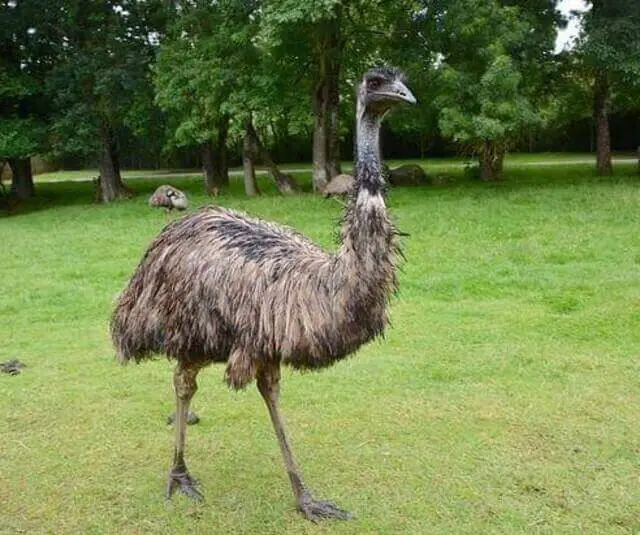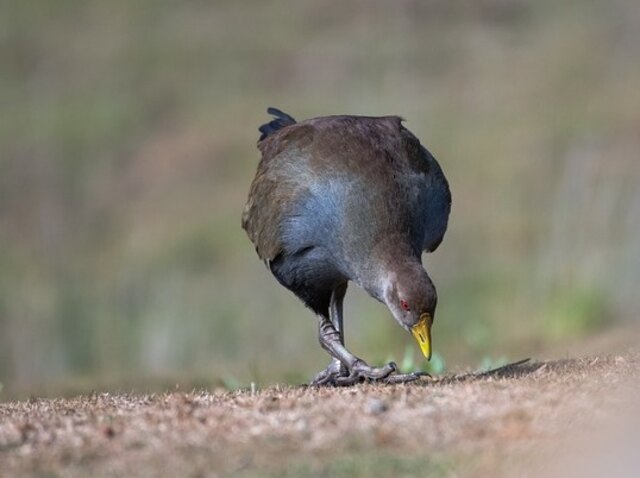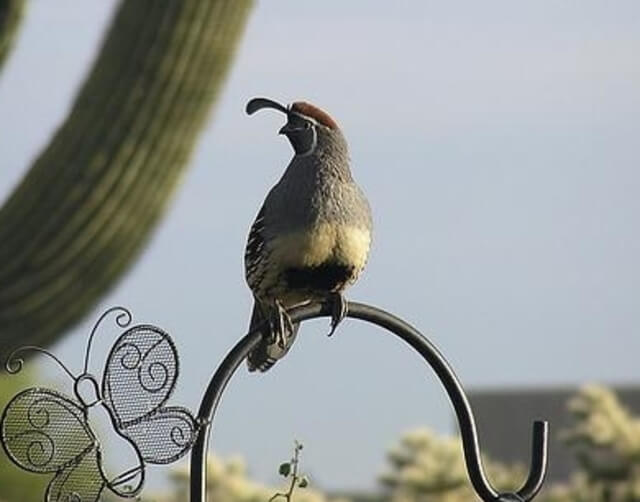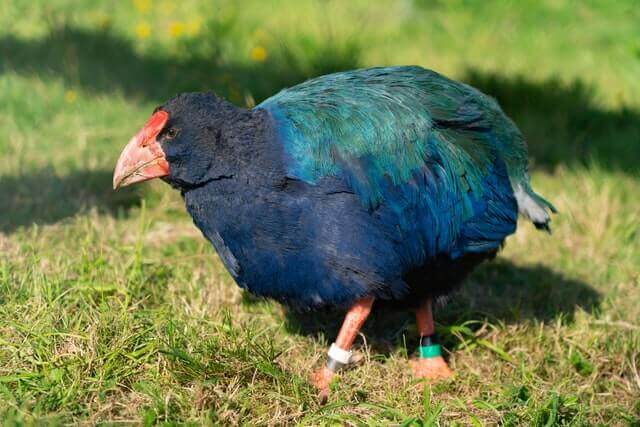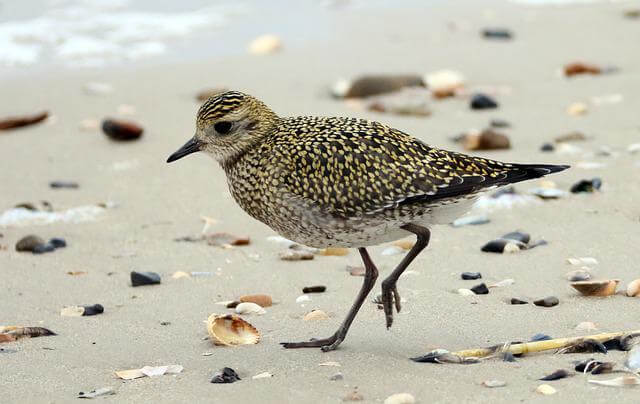Dive into the captivating world of avian speedsters as we explore 13 birds renowned for their impressive running abilities. Discover the unique characteristics and dazzling speeds that set these birds apart, and join us on the quest to determine the fastest avian sprinter on Earth!
Table of Contents
- 1 Types of Birds That Run Fast
- 2 Tasmanian Native Hen
- 3 Small Birds That Run Fast
- 4 Birds That Run On Water
- 5 What is the fastest running bird?
- 6 Birds that cannot fly are called?
- 7 What is the fastest flightless running bird?
- 8 Birds that run away from waves
- 9 Small birds that run on the beach
- 10 Small birds that run on the ground
- 11 Arizona birds that run
- 12 Author
Types of Birds That Run Fast
Ostrich

- Kingdom: Animalia
- Phylum: Chordata
- Class: Aves
- Infraclass: Palaeognathae
- Order: Struthioniformes
- Family: Struthionidae
- Genus: Struthio (Linnaeus, 1758)
- Scientific Name: Struthio camelus
- Size: 6.9 – 9.2 ft. (Adult Male), 5.6 – 6.6 ft. (Adult Female)
- Weight: 140 – 320 lbs (Adult)
- Top Running Speed: 43.5 mph
Ostriches are the largest living birds on Earth. They are well-adapted to life in hot, dry climates and can be found in Africa, Australia and South America. Ostriches typically live in open areas such as savannahs, grasslands and deserts.
They eat a variety of things, but prefer seeds, insects and small animals. Ostriches can run up to 43.5 mph and have been known to kill predators with their powerful kicks.
Rhea
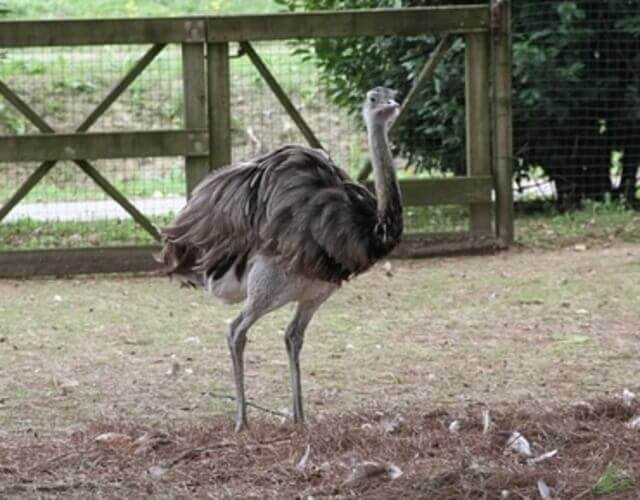
- Kingdom: Animalia
- Phylum: Chordata
- Class: Aves
- Infraclass: Palaeognathae
- Order: Rheiformes
- Family: Rheidae
- Genus: Rhea(Brisson, 1760)
- Scientific Name: Rhea
- Size: 3.0 – 5.6 ft
- Weight: 33 – 66 pounds
- Top Running Speed: 40 mph
The Rhea is a large, flightless bird that ranges throughout much of South America. The rhea prefers open habitats such as grasslands and savannahs, but can also be found in lightly wooded areas.
They are omnivores, and eat a variety of plant and animal material. Rheas are shy animals and are usually difficult to see unless they are close to the ground.
Cassowary
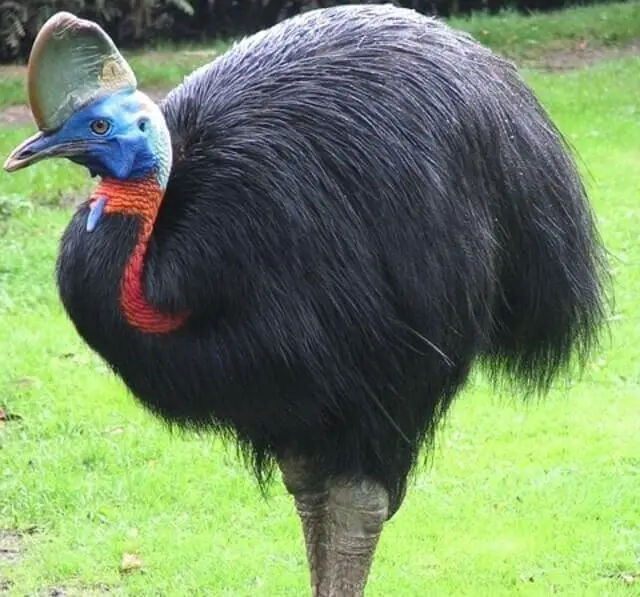
- Kingdom: Animalia
- Kingdom: Animalia
- Phylum: Chordata
- Class: Aves
- Infraclass: Palaeognathae
- Order: Casuariiformes
- Family: Casuariidae
- Genus: Casuarius
- Species: C. casuarius
- Scientific Name: Casuarius casuarius (Linnaeus, 1758)
- Size: 1.5 – 1.8 m (5 – 5.9 ft)
- Weight: 28.1 – 59 kg (62 – 130 lbs.)
- Top Running Speed: 30 mph
The Cassowary is a large, flightless bird that is native to the tropical rainforests of New Guinea and northeastern Australia. These birds have a range of about 1,500 square kilometers and typically reside in areas with dense understory vegetation.
Cassowaries are omnivorous and consume a variety of fruits, seeds, insects, small mammals and reptiles. In addition to being threatened by habitat loss, cassowaries are also killed by humans when they wander onto farms or residential areas.
Emu
- Kingdom: Animalia
- Phylum: Chordata
- Class: Aves
- Infraclass: Palaeognathae
- Order: Casuariiformes
- Family: Casuariidae
- Genus: Dromaius
- Species: D. novaehollandiae
- Scientific Name: Dromaius novaehollandiae (Latham, 1790)
- Size: 150 – 190 cm (59 – 75 in)
- Weight: 19 – 60 kg (41.9 – 132.3 lb)
- Top Running Speed: 30 mph
The Emu is a large, flightless bird that ranges in size from 5 to 6.5 feet tall and can weigh up to 132 pounds. They are native to Australia and live in open woodlands, scrublands, and grasslands.
Emus have a diet that consists mostly of seeds, fruits, and insects. They can run up to 30 mph and can swim when necessary. Emus are considered semi-domesticated animals and are bred for their meat, feathers, and oil.
Tasmanian Native Hen
- Kingdom: Animalia
- Phylum: Chordata
- Class: Aves
- Infraclass: Neognathae
- Order: Gruiformes
- Family: Rallidae
- Genus: Tribonyx
- Species: Tribonyx mortierii
- Scientific Name: Tribonyx mortierii
- Size: Approximately 45-60 cm
- Weight: Around 1 kg
- Top Running Speed: 30 mph
The Tasmanian Native Hen (Tribonyx mortierii), exclusive to Tasmania, Australia, is a remarkable flightless bird in the rail family. With a robust build and striking black plumage, it stands out in its native habitat.
Renowned for its adaptability, this bird navigates various ecosystems across Tasmania, showcasing its versatility in coping with the island’s diverse landscapes. Notably, it achieves remarkable ground speeds, reaching up to 30 mph, contributing to its ability to swiftly traverse its varied environment.
Greater Roadrunner
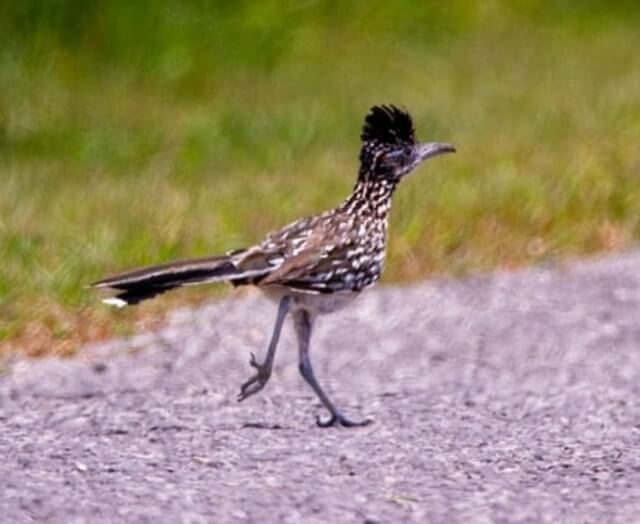
- Kingdom: Animalia
- Phylum: Chordata
- Class: Aves
- Order: Cuculiformes
- Family: Cuculidae
- Genus: Geococcyx
- Species: G. californianus
- Scientific Name: Geococcyx californianus (Lesson, 1829)
- Size: 50.8 – 61 cm (20 – 24 in)
- Weight: 220 – 540 g (7.8 – 19.0 oz)
- Top Running Speed: 26 mph
The Greater Roadrunner is a bird that is found in the southwestern United States. They live in open areas such as deserts and prairies. Roadrunners are omnivorous and eat a variety of things, including insects, lizards, snakes, small mammals, and fruit.
They get their water from the food they eat and from dew on plants. Greater roadrunners can run up to 25 miles per hour and have been known to outrun predators such as coyotes.
Lesser Roadrunner
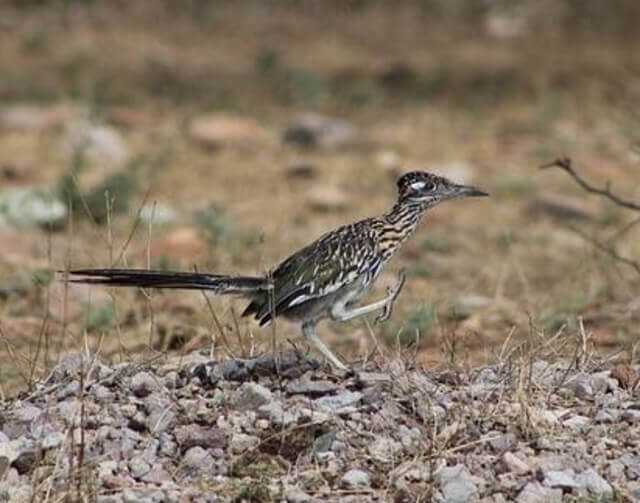
- Kingdom: Animalia
- Phylum: Chordata
- Class: Aves
- Order: Cuculiformes
- Family: Cuculidae
- Genus: Geococcyx
- Species: G. velox
- Scientific Name: Geococcyx velox (Wagner, 1836)
- Size: 45 – 51 cm (17.7-20″ in)
- Weight: (Adult Male) 170 – 210 g ~ (Adult Female) 160 – 195 g
- Top Running Speed: 15 – 20 mph
The Lesser Roadrunner is a species of bird that is found in the southwestern United States and northwestern Mexico. It is a small member of the roadrunner family, and is typically between 17 and 18 inches in length. The Lesser Roadrunner is a ground-dwelling bird that prefers open habitats such as desert, scrubland, and agricultural land.
It primarily eats insects, but will also consume small reptiles, mammals, and birds. The Lesser Roadrunner is a fast runner, capable of reaching speeds of up to 15-20 miles per hour.
Guam Rail
- Kingdom: Animalia
- Phylum: Chordata
- Class: Aves
- Order: Gruiformes
- Family: Rallidae
- Genus: Hypotaenidia
- Species: H. owstoni
- Scientific Name: Gallirallus owstoni
- Size: 29.0 cm (11.4″ in)
- Weight: 7.1 – 12.3 oz.(200 – 350 g.)
- Top Running Speed: 15.5 mph
The Guam Rail (Gallirallus owstoni) is a subspecies of the New Britain rail that is endemic to the island of Guam. It is the only surviving flightless bird on the island and is listed as critically endangered by the IUCN. The rail has a restricted range, inhabiting only a small area in the central part of the island.
It has a range of only about 50 sq km, and its habitat is limited to dense vegetation near the water’s edge. The rail’s diet consists mostly of insects, but it will also eat seeds and fruits. The rail is capable of speeds up to 15.5 mph, making it one of the fastest running birds in the world.
Gambel’s Quail
- Kingdom: Animalia
- Phylum: Chordata
- Class: Aves
- Order: Galliformes
- Family: Odontophoridae
- Genus: Callipepla
- Species: C. gambelii
- Scientific Name: Callipepla gambelii (Gambel, 1843)
- Size: 28.0 cm (11.0″ in)
- Weight: 5.5 – 7.0 oz (156 – 198.4 g)
- Top Running Speed: 15.0 mph
Gambel’s Quail are a small North American quail that is common in the western United States. The Gambel’s Quail has a range that extends from British Columbia, California to Texas and as far east as Missouri, and to central Mexico.
The Gambel’s Quail inhabits open woodlands, shrublands, and desert habitats. The diet of the Gambel’s Quail consists of seeds, insects, and other small invertebrates. Gambel’s Quail are fast runners and can sprint up to speeds of 15 mph.
Takahe
- Kingdom: Animalia
- Phylum: Chordata
- Class: Aves
- Order: Gruiformes
- Family: Rallidae
- Genus: Porphyrio
- Species: P. hochstetteri
- Scientific Name: Porphyrio hochstetteri (A. B. Meyer, 1883)
- Size: 50.8 – 63.5 cm (20 – 25″ in)
- Weight: 64.0 – 147.2 g (4.0 – 9.2 lb)
- Top Running Speed: 13.0 mph
The Takahe (Porphyrio mantelli) is a flightless bird that is endemic to New Zealand. It has a range of about 260 square kilometers and is found in the alpine grasslands and forests of the South Island. The takahe’s diet consists mostly of leaves, shoots, and twigs from various shrubs and trees.
It also eats some insects and grubs. Takahes are usually shy and elusive, but can sometimes be seen feeding on open ground or perched on a high perch. They are capable of running up to speeds of up to 14 miles per hour.
Weka (Woodhen)
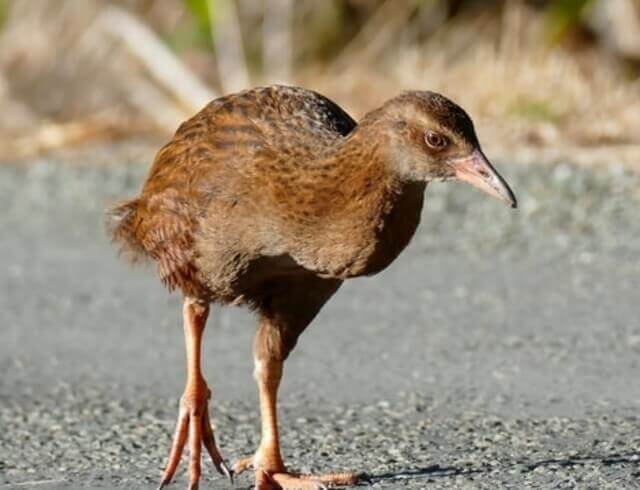
- Kingdom: Animalia
- Phylum: Chordata
- Class: Aves
- Order: Gruiformes
- Family: Rallidae
- Genus: Gallirallus
- Species: G. australis
- Scientific Name: Gallirallus australis (Sparrman, 1786)
- Size: 20″ – 24″ inches(Adult Male) ~ 18 – 20″ inches (Adult Female)
- Weight: (Adult Male) 530 – 1,610 g(1.0 – 3.5 lb) ~ (Adult Female)350 – 1,038 g (0.77 – 2.3 lb)
- Top Running Speed: 12 mph
The Weka is a medium-sized, brown bird that is found in New Zealand. They have short, stout legs and a strong bill. Weka are omnivores and eat a variety of things, including insects, berries, seeds and other plants.
They also eat small animals, such as lizards and rodents. Weka live in forested areas and wetlands. They have a wide range and can be found from sea level to the alpine region.
Great Tinamou
Kingdom: Animalia
Phylum: Chordata
Class: Aves
Infraclass: Palaeognathae
Order: Tinamiformes
Family: Tinamidae
Genus: Tinamus
Species: T. major
Scientific Name: Tinamus major (Gmelin, 1789)
Size: 38 – 46.5 cm (15 – 18″ in)
Weight: (Adult Male) 700 – 1.1 g (1.5-2.5 lb) ~ (Adult Female) 9.5 – 1.2 g (2.1 – 2.8 lb)
Top Running Speed: Up to 11 mph
The Great Tinamou are a diverse group of birds found from Mexico to Argentina. There are around 46 species of Tinamou, which range in size from the tiny Choco Tinamou, which is about the size of a robin, to the large Great Tinamou, which is about the size of a turkey. They inhabit a variety of habitats, including rainforest, dry forest, chaparral, and grasslands.
Their diet consists mostly of seeds and insects, but they may also eat fruit or other small animals. They are shy birds and are difficult to see in the wild. They typically walk or run rather than fly and prefer to stay hidden in dense vegetation. Tinamou are excellent runners and can reach speeds up to 11 miles per hour.
Chicken
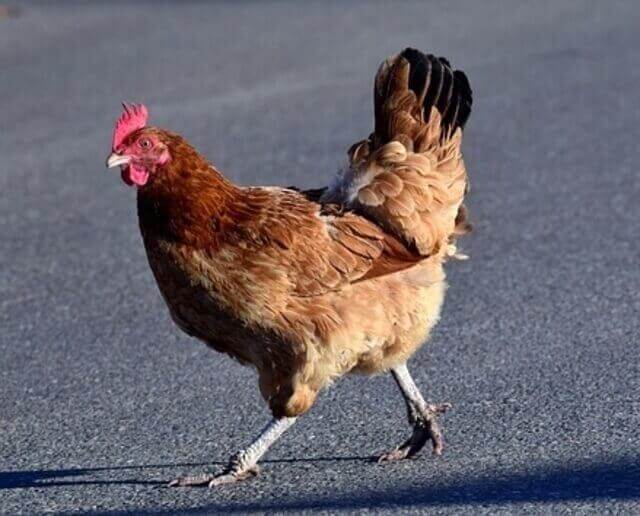
- Kingdom: Animalia
- Phylum: Chordata
- Class: Aves
- Order: Galliformes
- Family: Phasianidae
- Genus: Gallus
- Species: G. domesticus
- Scientific Name: Gallus domesticus (Linnaeus, 1758)
- Size: 20 – 27″ inches
- Weight: 5 – 10 pounds
- Top Running Speed: 9 mph
Chickens are native to Southeast Asia, and they were first domesticated in China. They now inhabit all continents except Antarctica.
Chickens live in a variety of habitats, including forests, meadows, deserts, and urban areas. They eat a wide variety of foods, including seeds, insects, fruits, and vegetables.
Small Birds That Run Fast
American Golden Plover
The American Golden Plover is a shorebird that can be found in the United States, Canada, and Mexico. They are usually seen on beaches, but can also be found in fields and tundra. Their diet consists of insects, crustaceans, and other small animals. They can walk up to 15 mph on the beach, but usually walk around 4 mph.
European Golden Plover
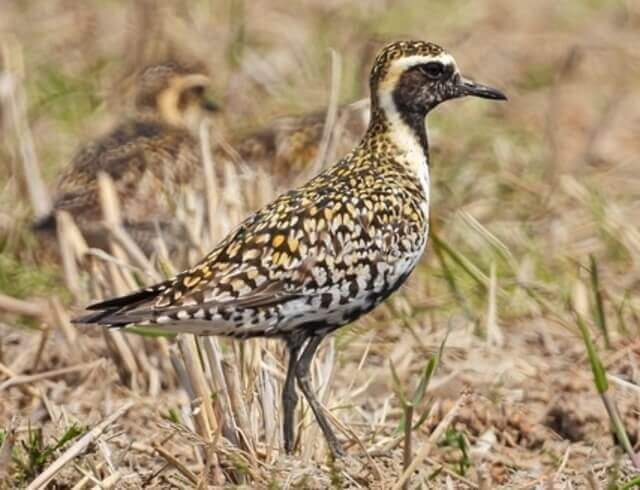
European Golden Plovers have a wide range that covers the entire Eurasian continent except for the most northern parts. They can be found in a variety of habitats, from open fields and coastal beaches to tundra and semi-arid deserts.
They are omnivorous and eat a range of items, from insects and other invertebrates to berries, seeds, and small mammals. Golden plovers can walk up to 12 miles per hour on beach sand, but typically move at a slower pace.
Sanderling
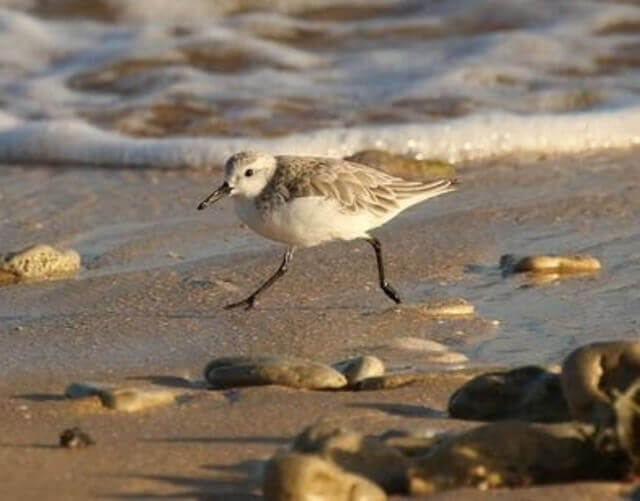
The Sanderling is a small wading bird that ranges along the coastlines of North America, Europe, and Asia. They can be found in a variety of habitats, including beaches, mudflats, and coastal wetlands.
Sanderlings are opportunistic feeders and eat a variety of things, including insects, crustaceans, mollusks, and seeds. They typically walk around 3 mph on the beach, but can run up to 10 mph if necessary.
Killdeer
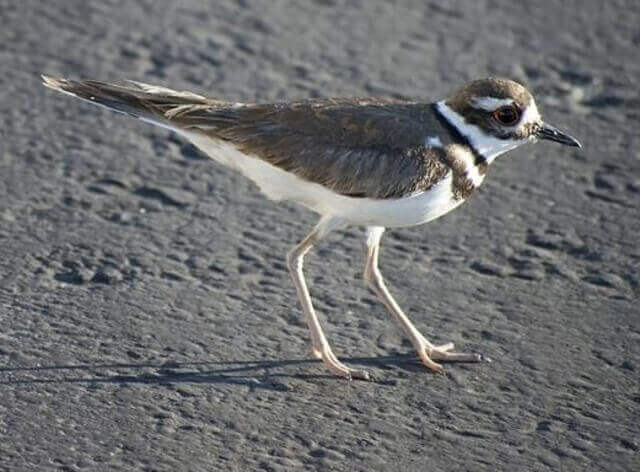
Killdeer are a common sight on beaches, coastlines and mudflats around the world. They have a wide range that covers North America, Mexico, Central America, and South America. Killdeer inhabit both coastal and inland areas, but they prefer habitats with short grasses or bare ground where they can see predators coming.
Their diet consists mostly of insects, but they will also eat small reptiles, amphibians, eggs and seeds. Killdeer can walk up to 10 mph (16 km/h) on the beach, but typically move at a speed of 4-6 mph (6-10 km/h). They are strong flyers and can travel long distances quickly when necessary.
Sandpiper

The Sandpiper is a small, plump shorebird that is found in coastal areas all over the world. They have a thin, pointed bill and feed on insects, worms, and other small creatures that they find in the sand or mud.
Sandpipers typically walk quickly along the beach, averaging about 5 mph. They can be seen darting back and forth as they search for food. Sandpipers breed in temperate climates and winter in tropical areas.
Birds That Run On Water
Western Grebe
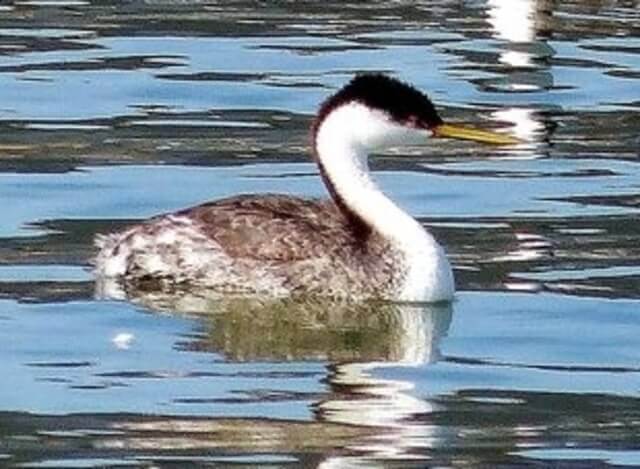
The Western Grebe (Aechmophorus occidentalis) is a species of grebe found in western North America. It breeds from Alaska and British Columbia south to Baja California, and inland to Alberta and Wyoming. It winters along the Pacific coast from central California to southern Mexico, and on the Atlantic coast from North Carolina to Texas.
This species is a medium-sized grebe, reaching a length of 25-30 cm (10-12 in). The adult has black upperparts with a white neck band, while the juvenile is brown with dark streaking on the upperparts. The bill is black with a yellow tip, and the legs are bright red. Western Grebes are well adapted to life on water, capable of running across its surface for short distances.
Clark’s Grebe
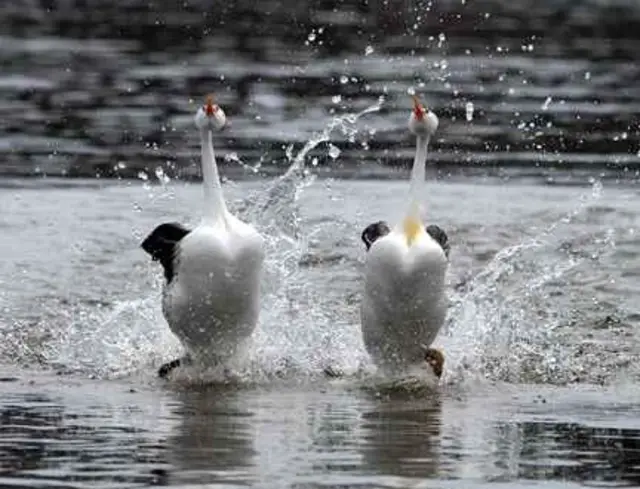
Clark’s Grebe is a medium-sized North American water bird. It ranges from the southwestern United States to central Chile, and winters along the Pacific and Atlantic coasts of Mexico. The Clark’s Grebe inhabits a wide variety of habitats, including freshwater marshes, open water, estuaries, and sheltered bays.
It feeds mainly on fish, but also consumes insects, crustaceans, and other small aquatic creatures. Clark’s Grebes are able to run across the surface of water for short distances to escape predators or catch prey.
What is the fastest running bird?
The fastest running bird is the ostrich. They have been clocked running at speeds of up to 43 mph. They are also great long distance runners and can run for up to 30 minutes without stopping.
Birds that cannot fly are called?
Birds that cannot fly are called flightless birds. Flightless birds have wings, but they cannot fly because they have a mutation in their genes that prevents them from growing the necessary muscle mass.
There are only about 60 species of flightless birds, and they can be found on every continent except Antarctica. Some well-known flightless birds include the ostrich, emu, and rhea.
What is the fastest flightless running bird?
The ostrich is the world’s fastest flightless bird. Ostriches can reach speeds of up to 43 mph, making them the fastest running birds on earth. They are also the largest living bird, reaching heights of up to 9 feet and weighing up to 280 pounds.
Ostriches are native to Africa and can be found in a variety of habitats, including deserts, grasslands, and forests. Ostrich populations are declining due to habitat loss and hunting.
Birds that run away from waves
When most people see the ocean, they see a vast and seemingly never-ending body of water. For birds, however, the ocean can be a dangerous place. There are many different types of birds that will run away from the waves, either because they are afraid of getting wet or because they fear being eaten by a predator.
One such bird is the sandpiper. These small shorebirds can often be seen running along the beach as the waves crash against the shore. They are very skittish and will flee at the slightest sign of danger.
Another bird that is known for its fear of waves is the gull. Gulls are large seabirds that typically live near coastal areas. They are known for their scavenging habits and will often steal food from other animals or raid garbage containers.
Small birds that run on the beach
There are many small birds that can be seen running on the beach. These birds include sandpipers, plovers, and semipalmated sandpipers. All of these birds are relatively small, ranging in size from about 5-7 inches in length. They are also all very fast runners, capable of moving quickly across the sand.
One of the reasons these birds are able to run so well is that they have long legs and slender bodies. Their legs are also adapted for running on sand, as they have webbing between their toes that helps them to grip the sand. In addition, these birds have short wings that help them to move quickly across the ground.
Another reason these birds can run so fast is that they are very agile. They can easily change direction and navigate through tight spaces. This allows them to avoid predators and get away from danger quickly.
Small birds that run on the ground
A common type of small bird that runs on the ground is the sparrow. Sparrows are small brown birds that can be found all over North America. They are known for their fast running speed, and they can often be seen darting across roads and sidewalks in search of food.
There are also several types of warblers that are known for running on the ground. Warblers are small, colorful birds that can be found in wooded areas throughout North America.
Arizona birds that run
Arizona is home to a variety of birds that are known for their speed, including the Gambel’s Quail and the Greater Roadrunner. The Gambel’s Quail is a small, brown bird that can reach speeds of up to 15 miles per hour when running. This quail can be found in open areas throughout Arizona, including the deserts and grasslands.
The Greater Roadrunner is a large, black and white bird that can reach speeds of up to 26 miles per hour when running. This roadrunner is common in the lower elevations of Arizona, where it can be found in open areas such as deserts and scrublands.

